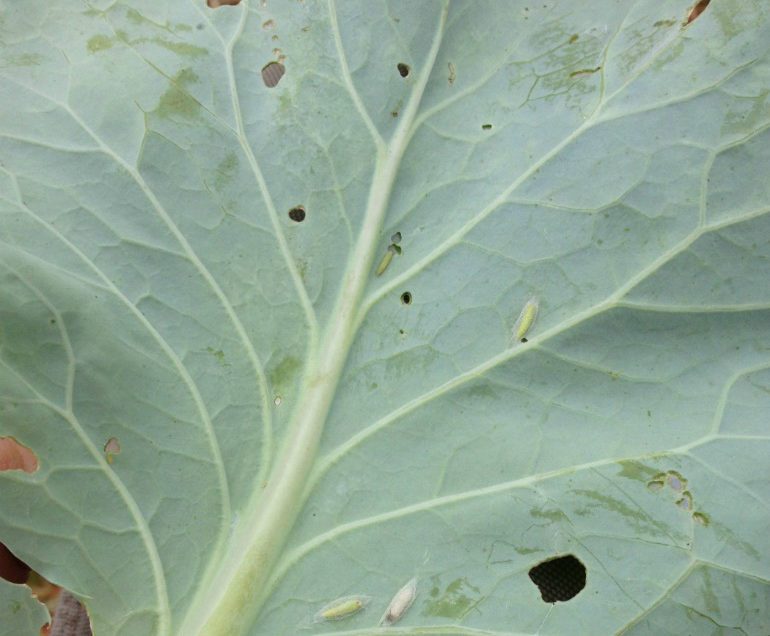LEXINGTON, S.C. – If fall brassicas are part of your gardening strategy, Clemson University Cooperative Extension experts say now is the time to develop a strategic plan to ward off diamondback moth caterpillars.

Brassicas are vegetables that include broccoli, Brussels sprouts, cabbage, cauliflower, collard, kale, kohlrabi, mustard, radish, turnip and watercress. These vegetables are prime targets for the diamondback moth. Plant damage is caused by caterpillar, or larval, feeding. Management includes using insecticides.
But, this pest is resistant to some insecticides. To determine which insecticides are best to use in South Carolina, Clemson Extension commercial horticulture agent Justin Ballew is leading a study that involves conducting resistance screenings.
“This is a great test we can do to help determine which insecticides show the best efficacy in fields,” Ballew said.
This is no charge for this service, which involves collecting 100 caterpillars from each field and exposing them to one of 10 different treatments. Based on the results, agents can determine which insecticides work and which insecticides particular populations may have developed resistance to. It takes three days to get the results back.
“Because this test requires collecting 100 caterpillars, there needs to be a decent-sized population present to conduct the test,” Ballew said.
For information, or to participate in this study, contact Ballew at 803-359-8515 ext. 122, or ballew3@clemson.edu. Other agents in the study include: Charleston County Agent Zack Snipes; Lalo Toledo, area Extension horticulture agent in Orangeburg, and Sarah Scott, commercial horticulture agent for Edgefield County.
Information from the Clemson Extension Home and Garden Information Center shows diamondback moth larvae, or caterpillars, are about a half inch long and are light green. Their bodies are covered by tiny, erect black hairs. They wiggle rapidly when disturbed, often dropping from the plant and hanging by silk-like threads. The larvae feed on all parts of a plant but prefer places around the buds of young plants, crevices between loose leaves of a firm head, and the undersides of wrapper leaves.
-END-
Get in touch and we will connect you with the author or another expert.
Or email us at news@clemson.edu

